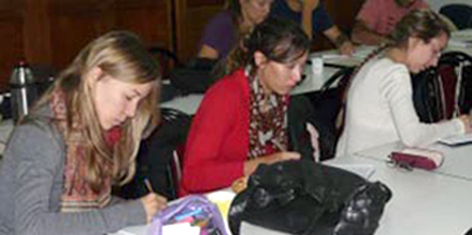
People who attended the course enjoyed Argentina and its traditions very much.
Prof Johan Spies from the Department of Genetics visited Argentina, where he and Dr Carlos Acuna (Universidad Nacional del Nordeste, Corrientes, Argentina) presented a course for doctoral students and staff of Cerzos-Conicet Bahia Blanca (something like the equivalent of South Africa’s NRF) and Universidad Nacional del Sur, Bahia Blanca. Prof Spies presented chromosomal evolution and its effect on fertility, while Dr Acuna took care of apomixis.
Bahia Blanca is a city with a population of almost the same as that of Bloemfontein. The city lies at the mouth of the Naposta River, which almost forms a delta where it flows into the sea. Bahia Blanca (white bay) derives its name from the salt deposits that lends a white colour to the beaches.
The people are very friendly and one soon learns to extend a long arm in greeting. Otherwise you are stuck with an ‘Ola’ while men and women alike will grab even a complete stranger to plant a kiss on your cheek. For people who places great value on personal space, this friendly gesture is not always as welcome!
Barbeque is a choice dish and is usually in the form of beef rib. “It was great (especially if you shut your eyes and ignore the scrumptious fat and future heart attacks)! With the rib they usually had blood sausage and very tasty pork sausage on the grid. Everywhere people are sipping, through a silver straw, their ‘mate’ (pronounce maty), a type of tea made from the leaves and stems of Yerba paraguariensis. It is generally drunk from a special calabash ‘cup’ through a silver straw, which also serves as sift to keep the leaves from your mouth. The calabash is usually passed from one person to another, with each person taking a sip from the brew! It is even passed around in class! Another thing in conflict with the upbringing I received from my mother (as is the cup at communion)!,” says Prof Spies.
“My short visit also taught me that the Argentinians are a proud nation that often faced adversity in the past. Nevertheless, they do not try to change their past. Street names even refer to dates from their past when, for example, they were attacked by England (in 1807). Only the almost 30 000 people who disappeared under the military regime, are rarely talked about!,” says Prof Spies.